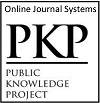THE PHENOMENON OF GOOGLE EFFECT, DIGITAL AMNESIA AND NOMOPHOBIA IN ACADEMIC PERSPECTIVE
Abstract
This study aims to determine the behavior and perceptions of students about Google Effect, Digital Amnesia, and Nomophobia syndromes, among students. For this purpose, a quantitative approach is used through an online survey method using Google Form. The number of samples is 110 out of a total population of 636 students of Library and Information Science of UIN Ar-Raniry Banda Aceh. Samples were taken randomly for 5 days. The results are as follows; 84.5 % of students have used smartphones as a reminder, 70.9 % used as their external memory. Meanwhile, 73.6 % feel confused by information overload,78.9 % feel annoyed by hyperlinks, 51 % feel more motivated to answer questions,59 % feel more confident in discussing new things when a smartphone in hand, 78,2 % said that a smartphone can help in understanding the material being taught. In terms of perception, students stated that nomophobia, digital amnesia, and the Google effect are common phenomena in the digital age, 59.1 %, 88.1 %, and 69.1 % respectively. Based on the findings, it is recommended that longitudinal research is needed to examine the long-term effects of this phenomenon to find out whether the high dependence on smart technology will strengthen or weaken the human brain's ability to think and take action independently since it is rarely activated?.
Keywords
Full Text:
PDFReferences
B. Sparrow, J. Liu, and D. M. Wegner, “Google Effects on Memory: Information at Our Fingertips,” Science (80-. )., vol. 333, no. August, pp. 776–779, 2011.
B. Sparrow, J. Liu, and D. M. Wegner, “Google effects on memory: Cognitive consequences of having information at our fingertips,” Science (80-. )., vol. 333, no. 6043, pp. 776–778, 2011.
Kaspersky, “The rise and the impact Why we need to protect what we no longer remember.” The United State of America, 2015.
S. Han, K. J. Kim, and J. H. Kim, “Understanding Nomophobia: Structural Equation Modeling and Semantic Network Analysis of Smartphone Separation Anxiety,” Cyberpsychology, Behav. Soc. Netw., vol. 20, no. 7, pp. 419–427, 2017.
Central Connecticut State University di New Britain, “World’s Most Literate Nations Ranked,” 2016. [Online]. Available: http://webcapp.ccsu.edu/?news=1767&data.
B. Huebner, “Transactive Memory Reconstructed: Rethinking Wegner’s Research Program,” South. J. Philos., vol. 54, no. 1, pp. 48–69, 2016.
N. Barr, G. Pennycook, J. A. Stolz, and J. A. Fugelsang, “The brain in your pocket: Evidence that Smartphones are used to supplant thinking,” Comput. Human Behav., vol. 48, pp. 473–480, 2015.
J. Bohannon, “Searching for the google effect on people’s memory,” Science (80-. )., vol. 333, no. 6040, p. 277, 2011.
M. Ngafifi, “Kemajuan Teknologi Dan Pola Hidup Manusia Dalam Perspektif Sosial Budaya,” J. Pembang. Pendidik. Fondasi dan Apl., vol. 2, no. 1, pp. 33–47, 2014.
I. Arpaci, “Understanding and predicting students’ intention to use mobile cloud storage services,” Comput. Human Behav., vol. 58, pp. 150–157, 2016.
C. Greenwood and M. Quinn, “Digital amnesia and the future tourist,” J. Tour. Futur., vol. 3, no. 1, pp. 73–76, 2017.
G. Başaran İnce, “Digital Culture, New Media and The Transformation of Collective Memory,” Galatasaray Üniversitesi İleti-ş-im Derg., vol. 0, no. 21, pp. 9–9, 2014.
A. Joanne Garde-Hansen, Andrew Hoskins, Save As … Digital Memories, vol. 110, no. 9. 2009.
E. Haskins, “Between archive and participation: Public memory in a digital age,” Rhetor. Soc. Q., vol. 37, no. 4, pp. 401–422, 2007.
J. S. Mendoza, B. C. Pody, S. Lee, M. Kim, and I. M. McDonough, “The effect of cellphones on attention and learning: The influences of time, distraction, and nomophobia,” Comput. Human Behav., vol. 86, pp. 52–60, 2018.
B. Ozdemir, O. Cakir, and I. Hussain, “Prevalence of Nomophobia among university students: A comparative study of Pakistani and Turkish undergraduate students,” Eurasia J. Math. Sci. Technol. Educ., vol. 14, no. 4, pp. 1519–1532, 2018.
S. Tams, R. Legoux, and P. M. Léger, “Smartphone withdrawal creates stress: A moderated mediation model of nomophobia, social threat, and phone withdrawal context,” Comput. Human Behav., vol. 81, pp. 1–9, 2018.
G. Wang and A. Suh, “Disorder or driver?: The effects of Nomophobia on work-related outcomes in organizations,” Conf. Hum. Factors Comput. Syst. - Proc., vol. 2018-April, no. April 2018.
M. Qutishat, E. Rathinasamy Lazarus, A. M. Razmy, and S. Packianathan, “University students’ nomophobia prevalence, sociodemographic factors and relationship with academic performance at a University in Oman,” Int. J. Africa Nurs. Sci., vol. 13, no. May, p. 100206, 2020.
R. Heersmink, “The Internet, Cognitive Enhancement, and the Values of Cognition,” Minds Mach., vol. 26, no. 4, pp. 389–407, 2016.
E. P. Baek, IH, “‘Digital dementia’ is on the rise,” ‘Digital dementia’’ is on the rise,’ 2013. [Online]. Available: http://koreajoongangdaily.joins.com/news/article/article.aspx?aid=2973527. [Accessed: 10-Jan-2019].
N. Selwyn, “Digital downsides: exploring university students’ negative engagements with digital technology,” Teach. High. Educ., vol. 21, no. 8, pp. 1006–1021, 2016.
M. Cherkaoui and S. J. Gilbert, “Strategic use of reminders in an ‘intention offloading’ task: Do individuals with autism spectrum conditions compensate for memory difficulties?,” Neuropsychologia, vol. 97, pp. 140–151, 2017.
D. Nicholas et al., “Student digital information-seeking behaviour in context,” J. Doc., vol. 65, no. 1, pp. 106–132, 2009.
DOI: http://dx.doi.org/10.22373/cj.v5i1.8219
Refbacks
- There are currently no refbacks.
Copyright (c) 2021 Nazaruddin Musa
except where otherwise noted.






















